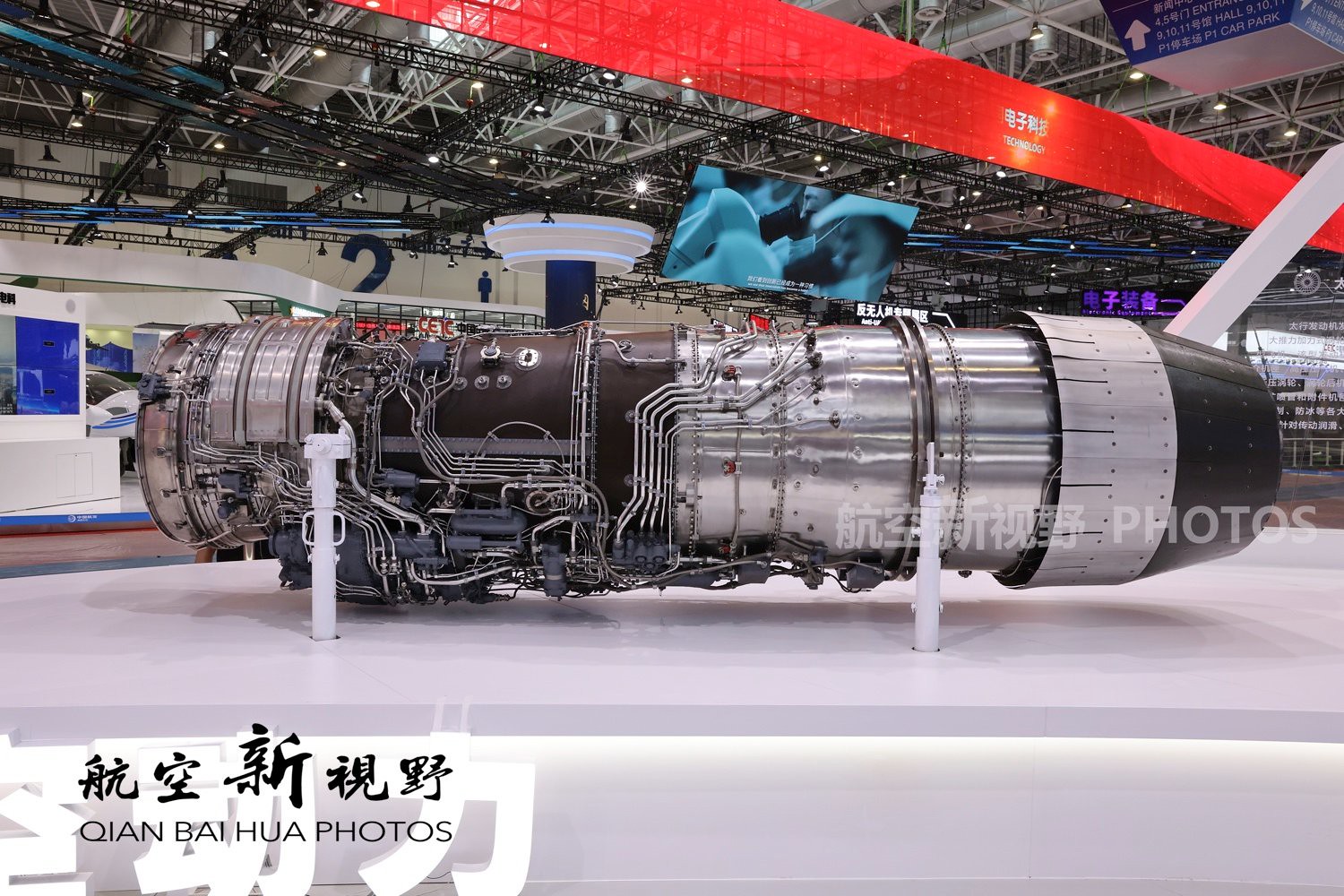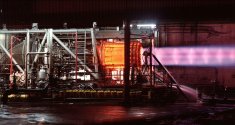Feels like the inner ring structure of the nozzle has changed. Consistent with what we see in the J-20’s WS-10 though. Also I just noticed but is that carbon fiber casing?A WS-10 mockup from Zhuhai.





You are using an out of date browser. It may not display this or other websites correctly.
You should upgrade or use an alternative browser.
You should upgrade or use an alternative browser.
Chinese Engine Development
- Thread starter jackbh
- Start date
by78
General
Feels like the inner ring structure of the nozzle has changed. Consistent with what we see in the J-20’s WS-10 though. Also I just noticed but is that carbon fiber casing?
The casing doesn't appear to be carbon fiber (probably just a dark coating), but the outer nozzle petals have the appearance of carbon-fiber.
SamuraiBlue
Captain
I doubt they will use carbon fiber for an actual engine. The heat is too high for carbon fiber. Probably just for mock up purpose.The casing doesn't appear to be carbon fiber (probably just a dark coating), but the outer nozzle petals have the appearance of carbon-fiber.
Where are the images?A WS-10 mockup from Zhuhai.





by78
General
I doubt they will use carbon fiber for an actual engine. The heat is too high for carbon fiber. Probably just for mock up purpose.
What? What are you talking about?
duncanidaho
Junior Member
I doubt they will use carbon fiber for an actual engine. The heat is too high for carbon fiber. Probably just for mock up purpose.
I think you mixed up the fan, compression and turboblades. The temperature in the fan and compression stage is not high, the only hot section in the engine is the turbine stage and i don't think, that anybody in the world are using carbon fiber for the turbineblades.
I doubt they will use carbon fiber for an actual engine. The heat is too high for carbon fiber. Probably just for mock up purpose.
No reason why you would not, in appropriate locations. On this mock-up the outer nozzle "turkey feathers" are definitely carbon fibre, and so are those of certain F100 variants or the M88 - it's an established solution. As is using CFRP for the outer casing of the fan duct, again the M88 as well as the F414 are examples. Not sure whether this WS-10 does, the colour seems off, but it might - it's perfectly suitable for the section in question.
by78
General
I think you mixed up the fan, compression and turboblades. The temperature in the fan and compression stage is not high, the only hot section in the engine is the turbine stage and i don't think, that anybody in the world are using carbon fiber for the turbineblades.
Don't overly complicate things. To explain things to him, you must first put yourself in his shoes. Imagine a Borzoi trapped in a human's body, kind of like . He probably imagines that outer enclosures become red hot when engines are in operation.
Quite a pedagogical challenge, if you're up for it.
Last edited:
Well, they do, partially:

This is a J58 in full afterburner (which sounds like a more exotic operating condition that it was, the SR-71 cruised on afterburner, so the engine spent hours in reheat!). Note that only the afterburner plenum, jet pipe and nozzle are affected though, the forward parts of the casing are much cooler and the outer turkey feathers are absent (they were airframe-mounted). Also, we are talking about a turbojet here, in turbofans like the M88 and F414 the cool bypass stream would further decrease outer casing temperatures.

This is a J58 in full afterburner (which sounds like a more exotic operating condition that it was, the SR-71 cruised on afterburner, so the engine spent hours in reheat!). Note that only the afterburner plenum, jet pipe and nozzle are affected though, the forward parts of the casing are much cooler and the outer turkey feathers are absent (they were airframe-mounted). Also, we are talking about a turbojet here, in turbofans like the M88 and F414 the cool bypass stream would further decrease outer casing temperatures.
